RAYZORS

EDGE

ROB RAYS TOUCH LIFF ON THE ICE
ROB RAY
with BUDD BAILEY
Foreword by MATTHEW BARNABY

Copyright 2007, 2011 by Rob Ray and Budd Bailey Foreword 2007, 2011 by Matthew Barnaby
All Rights Reserved. No part of this book may be reproduced in any manner without the express written consent of the publisher, except in the case of brief excerpts in critical reviews or articles. All inquiries should be addressed to Sports Publishing, 307 West 36th Street, 11th Floor, New York, NY 10018.
Sports Publishing books may be purchased in bulk at special discounts for sales promotion, corporate gifts, fund-raising, or educational purposes. Special editions can also be created to specifications. For details, contact the Special Sales Department, Sports Publishing, 307 West 36th Street, 11th Floor, New York, NY 10018 or .
Sports Publishing is a registered trademark of Skyhorse Publishing, Inc., a Delaware corporation.
www.sportspubbooks.com
10 9 8 7 6 5 4 3 2 1
Library of Congress Cataloging-in-Publication Data is available on file.
ISBN: 978-1-61321-025-3
Printed in the United States of America
To Juliean and Jody
FOREWORD
BY MATTHEW BARNABY
My first encounter with Rob Ray came in 1992 when I was 19 and coming into my first professional training camp with the Buffalo Sabres. Obviously, I was very nervous going to camp in the first place. I was trying to make the team as a tough guy at that point, and Rob was the tough guy there. I remember walking into the dressing room, wanting to see how we compared in terms of physical size.
I was a little uncomfortable around him at first because of who he was. I wasnt even done with junior hockey then, and I had grown up watching NHL players. Rob wasnt that much older than I was at the timefive yearsbut it seemed like a lot. I was like a kid at that point, and he was someone I looked up to.
I played a little in Buffalo for the next few seasons, while Rob and I were vying for the same job. He was the heavyweight, and he was much, much tougher than I ever was. I dont think it was until I made the team full time in 1995 that we really became close friends. Rob is a very guarded person. Until you get to know him, you dont really appreciate him. He was there to help me do all sorts of thingsgetting a place to live, getting accustomed to the life, telling me to save my money because it wouldnt last forever. I also learned a lot by watching the way he worked with charities. He helped me with every little aspect of the game that comes with playing in the National Hockey League.
If someone meets Rob Ray for the first time, they arent sure how to take him. Thats the way he is. He doesnt let a lot of people in at first glance. He wants to check them out. He analyzes people. In this job, there are a lot of people who want a lot of different things. Rob is very good at letting good people into his life. Once that happens, though, Rob will do anything for anyone. If I called Rob right now and told him I needed him to drive to Texas to see me about something, I know hed get in the car and do it. And hed do it for a lot of different people. Thats the type of person he is. Ive played with hundreds of players in my 14 years as a pro. Rob is the only guy that I remain close to. That says a lot about him as a person, and what hes done for me.
Rob and I played on some interesting teams with the Sabres, and we were caught up in all sorts of situations. When times were tough during Robs time in Buffalo, he was the visible face of the Sabres. He gave people someone to root for when there wasnt much going on with the team.
In this book, youll get to meet Rob, the most animated Sabre of all time. Youre going to find out what was in his mind while he was wearing a Buffalo sweater. We all watched him play, and noted his antics. But this book is your chance to get to know the real Rob Ray. I guarantee you, speaking as an ex-teammate and as a friend, youre going to learn a lot, because if Rob is one thing, its brutally honest.
1
I used to punch people for a living.
I also skated and shot and passed and checked and helped young players on and off the ice and did a bunch of other things. It was all part of my role as an enforcer in the National Hockey League. Its just that the part that involved fighting was the one that turned up on the television highlights.
Youd be surprised how many people didnt understand my role. They didnt get it. Too many people looked at me and said, Youre not a good player because you dont score goals and get assists every night. But those were the people who didnt understand the game and probably still dont. They have to learn that intangibles dont get printed on the scoresheet. Hitting a guy, holding him up, delivering a hit to change the momentum of the game, or drawing a penalty so my team could score a goaltheres much more to hockey than some people think.
Even some of my own teammates didnt completely understand what guys like me around pro hockey did. We had an argument in practice once because somebody put money up to give to the guy who scored the winning goal in a particular game.
Why would you give it to him only? I asked. There will be four other guys on the ice, plus a goalie. He wont get the opportunity without those other guys helping him. Theres a great deal that happens before someone scores a game-winning goal, and guys who play like I did are a part of it.
I have heard a lot of people over the years say things like, Rob is a bad man because he beats people up for a living. I have tried to explain to them that the fighting was part of my job. That was what the team expected me to do. I wanted to stand before the fans as a good role model. Maybe thats one of the reasons why I did, and still do, so many charitable functions off the ice. Those people who say I was a bad man are ignorant about hockey because they dont know the whole situation. It wasnt my job to be their childs role model when I was playing. I can be a hero or idol, but its the parentsjob to teach right from wrong.
It seems like I was always trying to defend myself and my behavior. With the Bills, if a lineman makes a great block to let the quarterback make a great play, he usually doesnt get much credit for it. The quarterback gets the credit. Meanwhile, the linemans stopped three guys. Its like that in hockey. If I could affect a game and allow our top players to score at key times or prevent an important goal, I did my job.
My role on the team was much more difficult than you might think. Many of my teammates looked at what I did and said, I would never want your job. And there were days where I couldnt hang on to my stick because my hands were so sore. I bobbled passes and had trouble shooting the puck, but the guys wouldnt give me a hard time about it. Most of them knew not to say a word, because they understood. When I did something good, they were the first ones to congratulate and encourage me.
Too many casual hockey fans look at fights and think players are rassling, that they stage all their fights. Those fights are very real, and Ive got the scars to prove it. In 1995 I broke the orbital bone under my eye. Tony Twist of the Blues hit me in a fight in St. Louis, and my whole head felt like it instantly went hollow. Some air under my skin went down into my cheek, hit my jaw, and then came back up my face as a bubble. Everyone in the dressing room was watching it. When the air pocket hit my eye, the eye shut, and I couldnt pry it open for seven days. I had to wait until the air worked itself out.

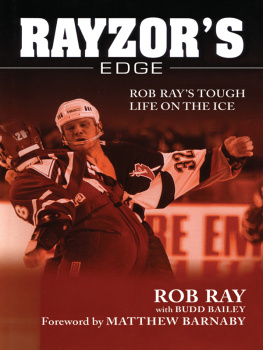
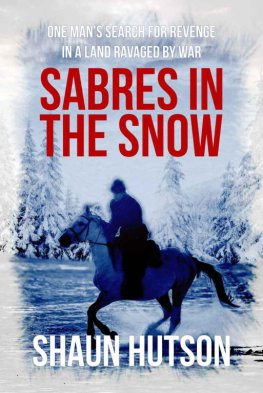
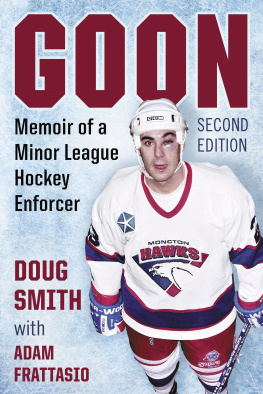
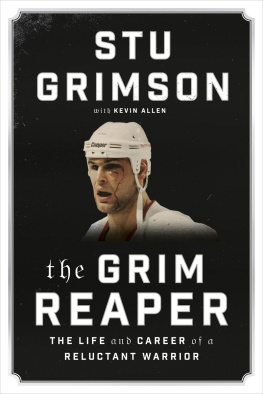
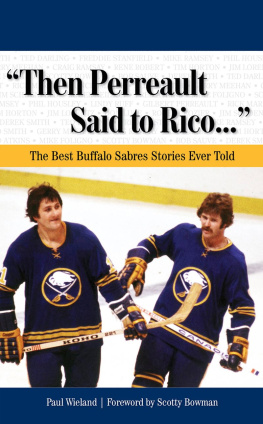
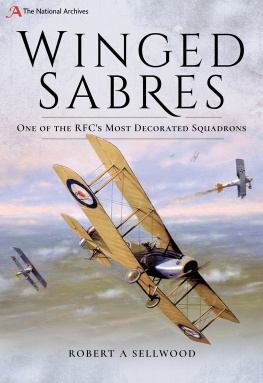
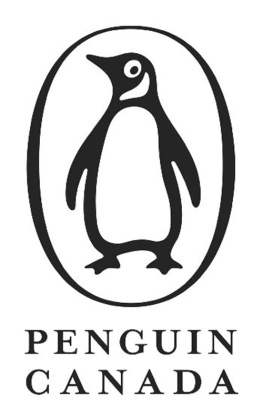
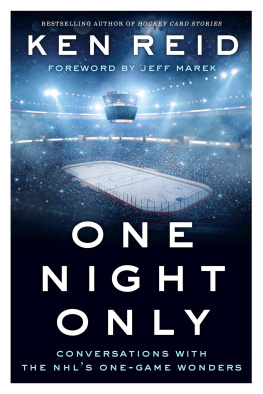

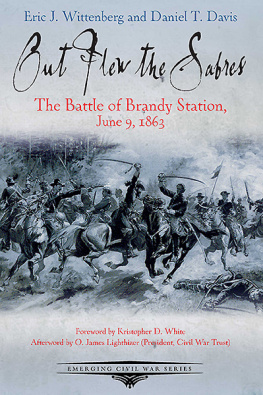
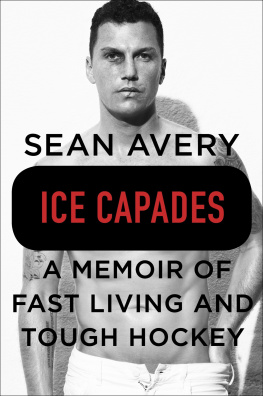

 EDGE
EDGE 